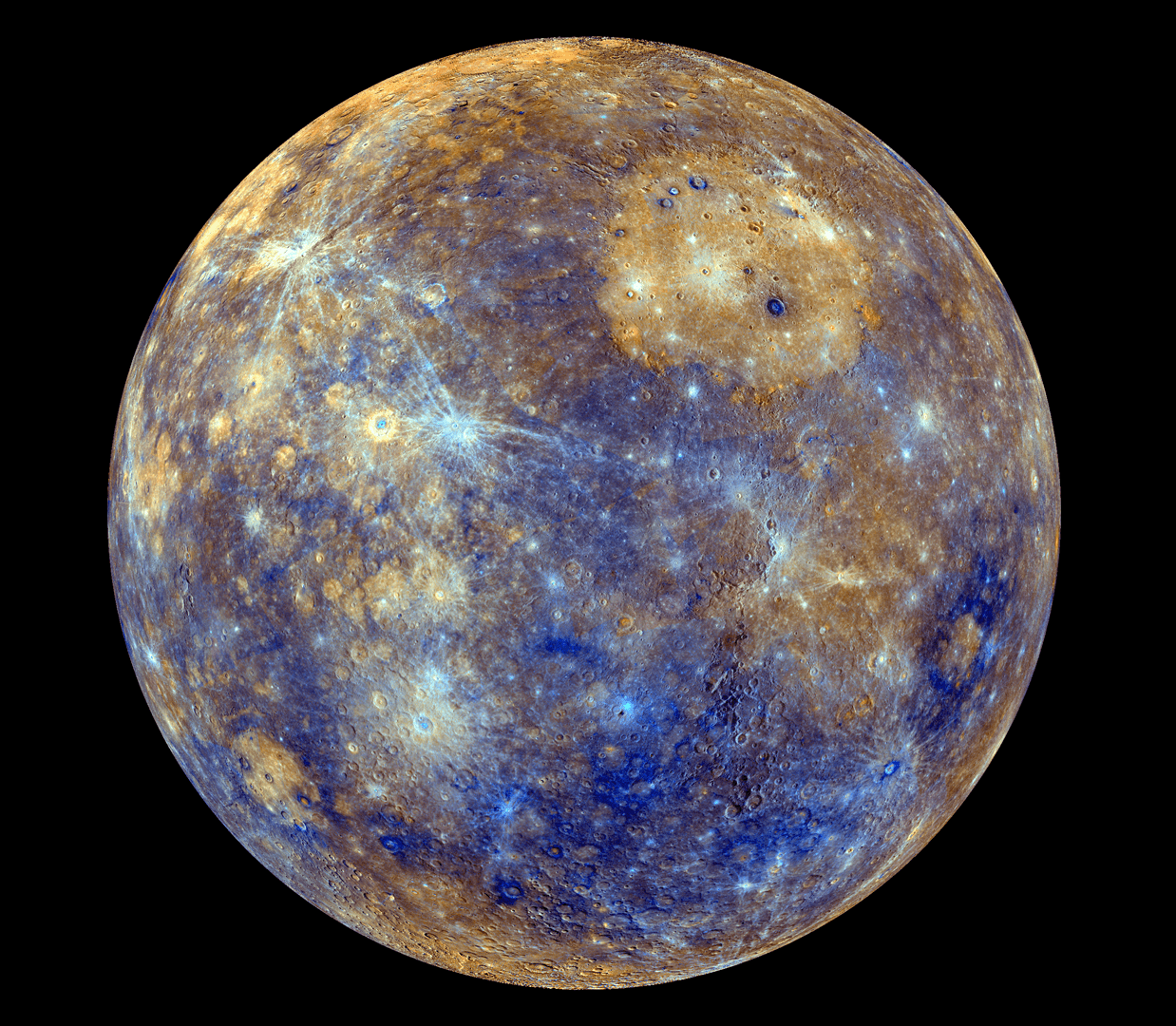Created by the MESSENGER mission team at the Johns Hopkins University Applied Physics Laboratory and the Carnegie Institution of Washington, this animation gives us a look at the spinning globe of Mercury, its surface color-coded to reflect variations in surface material reflectance.
Thousands of Wide Angle Camera images of Mercury’s surface were stitched together to create the full-planet views.
While the vibrant colors don’t accurately portray Mercury as our eyes would see it, they are valuable to scientists as they highlight the many different types of materials that make up the planet’s surface. Young crater rays surrounding fresh impact craters appear light blue or white. Medium- and dark-blue “low-reflectance material” (LRM) areas are thought to be rich in a dark, opaque mineral. Tan areas are plains formed by eruption of highly fluid lavas. Small orange spots are materials deposited by explosive volcanic eruptions.
At this point, over 99% of the Solar System’s innermost planet has been mapped by MESSENGER. Read more about the ongoing mission here.
Image/video credit: NASA/Johns Hopkins University Applied Physics Laboratory/Carnegie Institution of Washington


The number and lengths of the rays in the video are very impressive! This isn’t an artifact due to ‘stitching’ the images together but are real features, right? Due to it’s lower (.37) gravity, ray debris travels further? And/or due to higher velocity of impactors at Mercury’s orbital distance from Sol?
The rays are real! I believe the crater Hokusai has the longest rays on the planet – over 1000 km! http://lightsinthedark.wordpress.com/2011/04/01/the-colors-of-mercury/
Is there any thought that due to Mercury being a remnant core of a Hot Jupiter due to it’s density just asking.
I’m no historian of science but I think the idea of Mercury as an outgassed remnant and the observations of hot jupiters is divided by time. The former idea, which I don’t think is excluded, had its heyday before the first measurements of Mercury’s density I would think.
MESSENGER has shown that part of the explanation for Mercury’s high density is an anomalously thin mantle, but I don’t think there has been a predictive model put up yet.